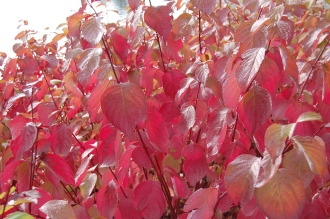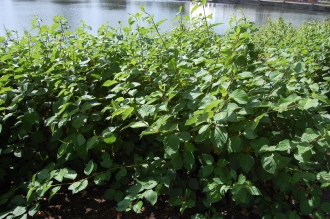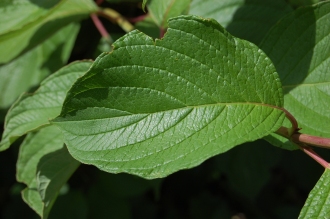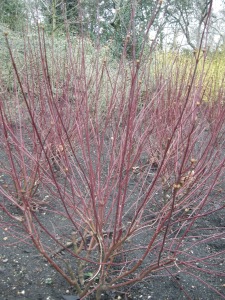Position: Full sun to partial shade.
Soil: Moist but well drained.
Flowering period: Late spring to early summer.
Eventual Height: 3m
Eventual Spread: 3m
Hardiness: 2a, 2b, 3a, 3b, 4a, 4b, 5a, 5b, 6a, 6b, 7a, 7b, 8a, 8b, 9a
Family: Cornaceae
Cornus alba is a deciduous, suckering shrub with an upright habit and a vigorous and growth rate. It has upright stems, with the new shoots being bright red in winter. The foliage is dark green and ovoid to elliptic in shape. The white flowers are borne in flat cymes in late spring and early summer. The ellipsoid fruit that follows are white often tinged with blue.
Cornus alba, commonly known as Siberian Dogwood, Red-Barked Dogwood or White Dogwood, is native to eastern and central Asia. The first specimen was introduced to England from Siberia in 1741. Like many Cornus species has historically been used for weaponry, with Cornus alba arrow shaft examples dating back to the Mesolithic era.
The etymological root of the binomial name Cornus is derived from the Latin cornus ‘horn’, due to its dense properties and was originally the old name for the species Cornus mas. Alba is derived from the Latin meaning ‘white’, in reference to its flowers.

Cornus alba ‘Sibirica’ Autumn Leaf (20/10/2012, Kew Gardens, London)
Cornus alba is useful to the landscape architect for its dazzling red shoots in winter an is particularly useful when planted en mass. Only the new wood is this red colour so for full effect the plant should be stooled to near ground level each year.
Ecologically, Cornus alba berries are eaten by some mammals and many birds. The leaves provide food for some moths and caterpillars.
The Royal Horticultural Society has given Cornus alba ‘Sibirica’ their prestigious Award of Garden Merit in 1993.
Cornus alba prefers moist, fertile, well-drained soils. It tolerates most pH of soil.
Cornus alba is most effective when stooled. This should be carried in March and cut back to 5-10cm above soil level, this will ensure its red stem colour is maintained for the following winter. This should be carried out in spring before the leaf breaks after a winter of enjoying this plants stems.








Leave a comment